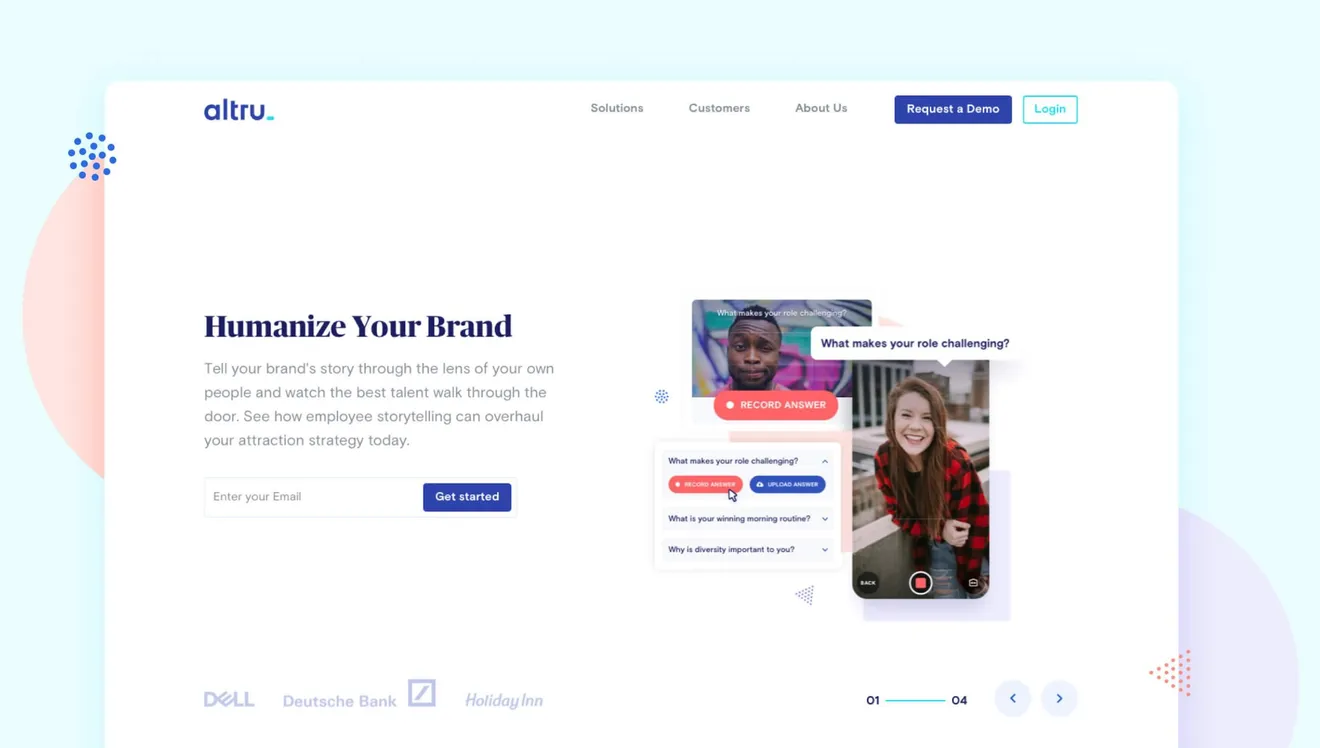Product leaders, whether in early-stage or established companies, face a critical decision: build with an in-house team or partner with an external one. Sometimes, do both. The doubt about outsourcing vs. in-house development is common and entirely normal when crafting new digital experiences.
Over 6 years leading partnerships at Z1, I’ve had many conversations with founders and innovation leaders looking to bring new products to market—and I take note when certain patterns emerge.
Here’s what I’ve heard from founders and product leaders about their main concerns, and what I’ve come to understand about when it makes sense to bring in an outside team—or when it's better to hire in-house.
Understanding founders' hesitation
It’s rarely just about cost. More often, the hesitation is emotional. Founders and decision-makers in corporations want to stay close to their ideas. They worry an outside team won’t “get it,” or that the final product might feel disconnected from the original vision. They might wonder: Can I trust this team? Will I still maintain control? What if the output doesn't meet my expectations?
Many founders and leaders fear losing clarity of their original idea or being handed a final product that doesn’t reflect their intent.
These are valid concerns. Many founders and leaders fear losing clarity of their original idea or being handed a final product that doesn’t reflect their intent. They’ve heard stories of agencies promising A+ Teams at first, but instead handing it to less experienced teams, or worse—outsourcing again themselves.
I spoke with a founder coming from an experience with an agency that delivered a functional interface, but the user experience felt weird, though it was hard to pinpoint exactly why. It just didn’t feel right.
What he needed wasn’t a vendor, but a true partner—one who cared just as much about how it felt as how it functioned. We wanted to be the team that could turn his vision into meaningful interactions, and not just functional screens.
Sometimes the hesitation to outsource does stem from cost. But weighing a project fee against a full-time salary isn’t a fair comparison. A salary includes more than base pay.
Sometimes the hesitation to outsource does stem from cost. But weighing a project fee against a full-time salary isn’t a fair comparison. A salary includes more than base pay. Add hiring, benefits, onboarding, and the time it takes to build the right internal culture. With an outcome-based project partner, they tap into 3-4 functional roles working fractionally, only engaging when necessary.
When does bringing work in-house make more sense?
In-house teams make sense when:
- Competitive advantage is in proprietary technology.
- Brand or UX is so tightly tied to a product’s success that daily collaboration and complete attention are essential.
For a company whose competitive edge is built on proprietary technology, the product isn’t just a means to an end, it is the innovation. It might need innovative algorithms, or highly specialized infrastructure, and should live inside the company’s culture.
Some companies reach a point where the product itself is the brand. At that point, design decisions aren’t just executional, they’re existential. Airbnb, for example, has used design to shift the idea of travel itself. From transactional to aspirational, from hotel-alternative to experience-driven.
Even then, outside support can still play a role. We’ve seen blended teams succeed, especially when an internal team owns core development, or while an external team builds out complementary or multiplatform products.
When does outsourcing work best?
Outsourcing works best to:
- Reduce the time to market
- Show traction to investors
- Stay focused on strategy
- Validate fast
- Tackle sideprojects
For early-stage startups and corporates, outsourcing can be a smart way to augment internal teams with external expertise. It’s ideal for reducing time to market, shipping products quickly, showing traction to investors, and testing product–market fit without the weight of long-term commitments. Rather than sinking time and budget into recruiting, onboarding, and managing full-time staff, some choose a more agile path.
Non-technical founders and teams often need to stay focused on strategy and fundraising. Having a team they trust handling product execution allows them to keep momentum without stretching themselves thin.
And even when companies do have in-house engineers, they’re usually consumed by core product work. Outside teams can help tackle side projects—like launching a marketing site or companion app—without disrupting core development.
Even when companies do have in-house engineers, they’re usually consumed by core product work. Outside teams can help tackle side projects.
I’ve talked to lots of people with a new product idea who are overwhelmed by the technology options available, if they don’t have a technical background or a technical co-founder. They explore frameworks and no-code tools, only to get stuck comparing options. What they really need is someone to help make the right calls—someone who’s done it before.
When we met Ev Williams, he was just exiting Medium and had every option available to him to bring his product idea to life - he chose Z1. We designed and built the early product, collaborated with their brand studio, and helped them test with early adopters. As Mozi grew, they hired a technical lead who gradually took over Z1’s role—and even hired one of our developers to join full-time.
One piece of advice when building a new product: Avoid rushing
Founders and innovators often feel pressure to move fast: to ship, impress investors or managers, and prove traction. But building too quickly, without clarity, often leads to wasted effort. Without a great user experience, momentum isn’t likely to last.
Building too quickly, without clarity, often leads to wasted effort. Without a great user experience, momentum isn’t likely to last.
We take time to ask questions like, “Is this truly essential for V1?” and “What will clearly signal product–market fit?” Moving fast matters—but only when it's with intention. A thoughtfully prioritized first product, built with care and clarity, often makes the difference between gaining traction and falling flat. That’s why we aim for Minimum Perfect Experiences, not just Minimally Viable Products.
We aim for Minimum Perfect Experiences, not just Minimally Viable Products.
Outsourcing doesn’t mean giving up flexibility. We've supported founders and product teams as their ideas evolved and we’ve learned to adapt. We know pivots aren't signs of failure; they're part of the process.
So what’s the answer? It depends, sometimes both!
Each path depends on the individual, the context, and what’s most important at that moment. It could be funding, calendar milestones, product maturity, or team dynamics.
Sometimes the right path isn’t a choice between one or the other. It can be both, in parallel, for different reasons. Building an internal team takes time—recruiting, developing processes— and risks—aligning with your business culture. Meanwhile, founders and product leaders can move quickly with external partners while preparing to bring work in-house.
Sometimes the right path isn’t a choice between one or the other. It can be both, in parallel, for different reasons.
Fundraising works the same way. As relationships form and the data room gets built, showing product progress—even in small milestones—can inspire confidence.
That’s how it worked with Vincent Polidoro and Alykhan Rehmatullah, original co-founders of Altru. They were clear about how to collaborate: we’d handle some frontend layers, while they owned the backend and built their own internal team around it. That clarity made for a great collaboration. After they sold Altru to iCIMS for $60M, they came back—this time to partner with us again on their next venture, Kalpa.
Choose more than an outside team—A growth partner
In my role at Z1, I help shape the earliest stages of our collaborations. I match founders with the right squad, define how we’ll work together, and align on goals and rhythms.
Over time, I observe these relationships unfold between the founding team and the product squad. Nearly half of the engagements kicked off as classic Zero to One product launches move into ongoing support plans. As internal teams grow, Z1 transitions from a product team to a support system. It starts to look less like outsourcing, and more like a team growing into each other.
As internal teams grow, Z1 transitions from a product team to a support system. It starts to look less like outsourcing, and more like a team growing into each other.
Like we did with Cole Nussbaumer, CEO and founder of Storytelling with data, who once described Z1 as "an extension of their family," which meant a lot. Eventually, Z1 coached them through bringing total product ownership in-house.
And, Aaron Lee, co-founder and CEO of Smith.ai, would say the same. We worked together on his first product over several years, before helping him bring everything fully in-house.
In our partnerships, we try to be the bow. The founding or innovation team, the product, the vision—they’re the arrow. Our role is to create the tension, the direction, and the release, letting the product fly further and with more purpose. And eventually, when the arrow finds its own momentum, we step back. Whether we’re building systems for hand-off readiness or coaching through future hiring decisions, we’re helping plan ahead. That’s what success looks like.
In our partnerships, we try to be the bow. The founding or innovation team, the product, the vision—they’re the arrow.
Curious about what this could look like for your company? Book a Strategic Session with our team. Let’s talk about where you are and where you want your idea to go—and how to get there without compromising what makes your product matter.




